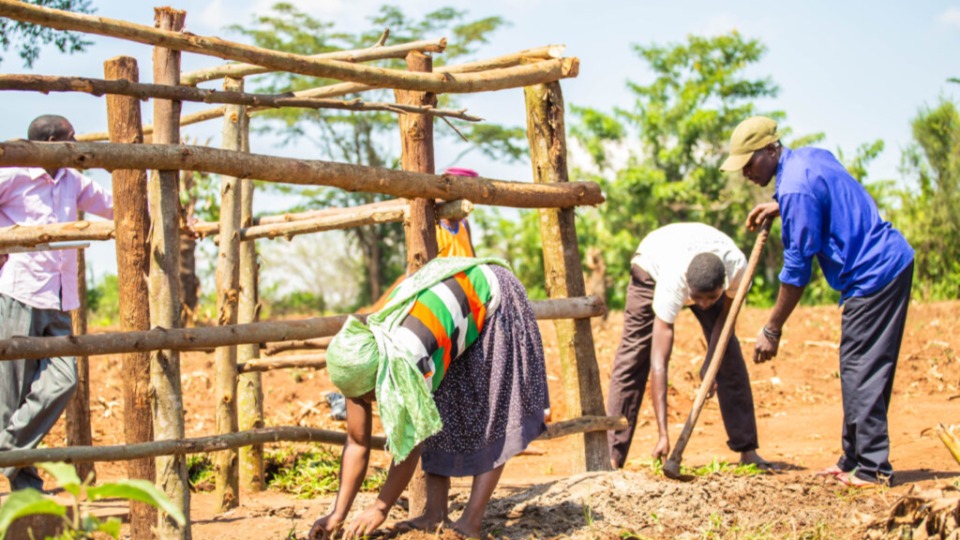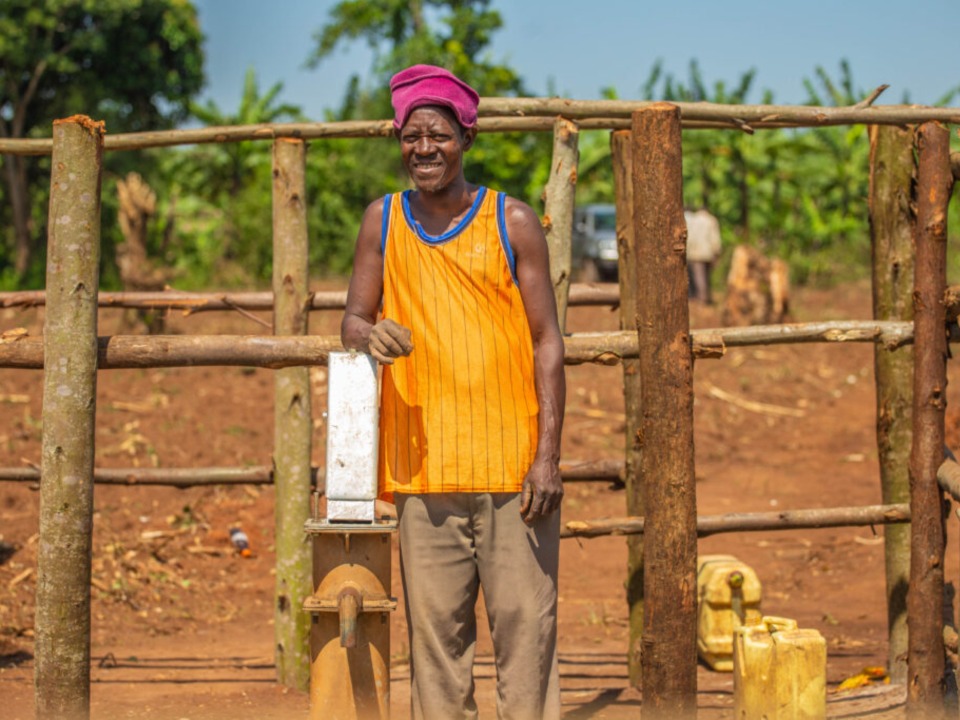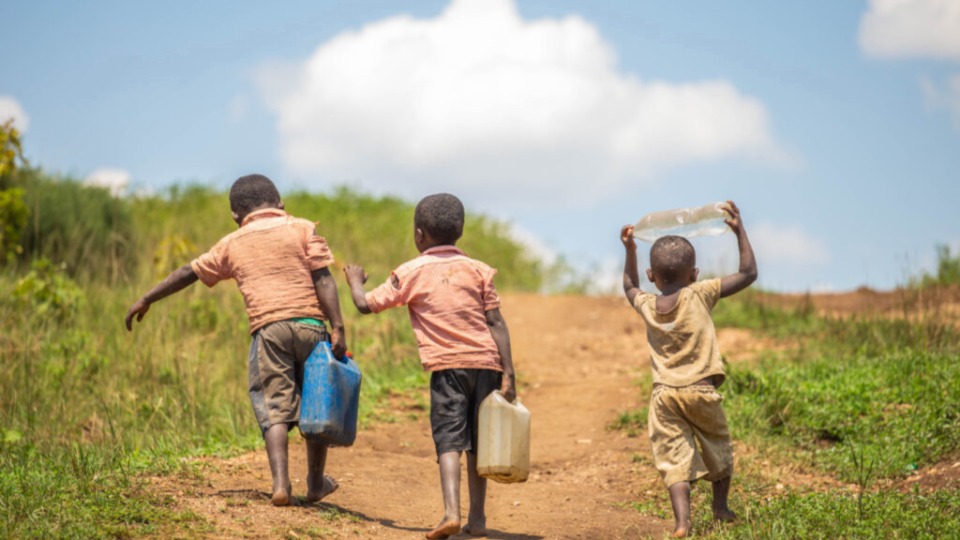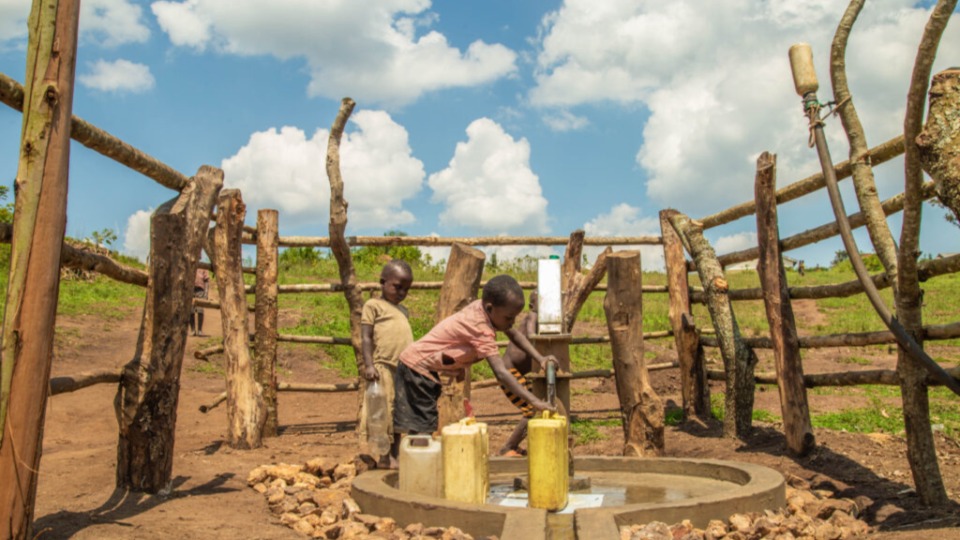
This story appears here courtesy of TheChurchNews.com. It is not for use by other media.
By Mary Richards, Church News
Most people in developed nations walk just a few feet to a clean water source — the sink in their home. But in many places of the world, the water is not nearby, nor is it safe or reliable. This was the case in the village of Rugarama in Uganda until recently.
The people of Rugarama — around 80 households — were using a borehole as a water source. The pipes broke down and the village no longer had a safe water resource, which posed serious health risks. People had to fetch water from ponds or the next village over.
Water For People, with funding from Latter-day Saint Charities, worked to train the people of Rugarama to ensure long-term water sustainability, and the village restored the borehole. A newly formed water committee oversees the operations and makes sure to keep the source free of contamination.
Joseph Bwanika, who lives in Rugarama, said: “I make sure the source is functioning well, and I oversee the systems. When there are any issues, I make sure to report them to the chairperson. Therefore, I ensure that people have water all the time.”

What Safe and Reliable Water Means
When villages do not have water nearby, children and women often have to make long treks to a water source.
“If you can bring safe, reliable water to the community, now the children and young girls can go to school. On a Sunday they could go to church instead of hiking miles to get water,” said Matthew Gardner, manager of food security and clean water at Latter-day Saint Charities.
Gardner said safety is a big issue as well. “Imagine young girls traveling miles in not very populated spaces or in the dark. There’s a lot of violence that happens,” he explained. “Having a safe place where they can go get water makes such a huge difference in their lives. It’s something we take for granted.”
UNICEF reported that one in four people worldwide don’t have access to clean water in their home. Sister Reyna I. Aburto, Second Counselor in the Relief Society General Presidency, has written about how essential clean water access is to the healthy growth and development of children.
“Even when water is safe (from a well or water treatment plant), there is a risk that it could be contaminated as it gets transported or stored. Around the world, many women and children are responsible for safely transporting water to their families,” she posted on Instagram in November 2021.
Gardner said Water For People helped the people in Rugarama rehabilitate the pipe systems so that the water would be clean and more reliable than it has been.

How Water For People Trains and Empowers Local Communities
Water For People’s motto is “Everyone Forever.” Their goal is to help local communities receive safe and reliable water for schools, families, clinics and more, but eventually without continued direct support. It can take a few years for the organization to exit an area.
Gardner said Latter-day Saint Charities has been collaborating with Water For People in Uganda since 2016. “They work with the communities to try to help strengthen the ability of a local committee to oversee the work,” he said. He also explained how they focus on WASH, which stands for water, sanitation and hygiene services.
Currently, Water For People is working in two districts in Uganda. Brenda Achiro Muthemba, Water For People Uganda country director, said last year, with support from Latter-day Saint Charities, they worked on construction of a one-pipe water supply system to serve 31 villages in one district and rehabilitated 15 boreholes to serve 15 villages in the other district.
They were pleased to serve 10 public institutions — seven schools and three clinics — reaching 8,571 people.
“Our work in Uganda has generally been going on smoothly, with exception of a bit of slowdown due to [the] COVID-19 pandemic for most of last year,” Muthemba wrote in an email to the Church News.
She said that, with the reopening of schools and the economy, the country program looks forward to continuing to help the people with safe water and sanitation.
Gardner explained that, to keep water systems sustainable, the local communities pay a fee to have access to the water. Those finances are used to maintain, operate and repair the systems. However, the president of Uganda canceled payment for water during the COVID-19 pandemic. So the challenge in the future will be to establish a fee-collecting model again to maintain the systems.

How Latter-day Saint Charities Works Under Local Area Leadership
Muthemba said the Water For People country program has a good working relationship with Latter-day Saint Charities as they support the people of Luuka and Kamwenge in Uganda. She wrote that the joint field visits in particular showed the engagement and excitement for the work.
“We look forward to future collaboration,” she said.
Gardner said Latter-day Saint Charities is moving to a more locally led model, supported by headquarters in Salt Lake City, Utah. It means Church area leadership will set priorities and decide projects and collaboration for their own area.
He said Water For People is grateful for the funding help from Latter-day Saint Charities, but he knows the organization will continue to work in Uganda even if that funding goes away in the future.
“They are committed,” he said. “They always look for funding to meet their goals, and their goals are to have long-term, clean, safe, reliable and sustainable water systems for people in need.”
Copyright 2022 Deseret News Publishing Company
